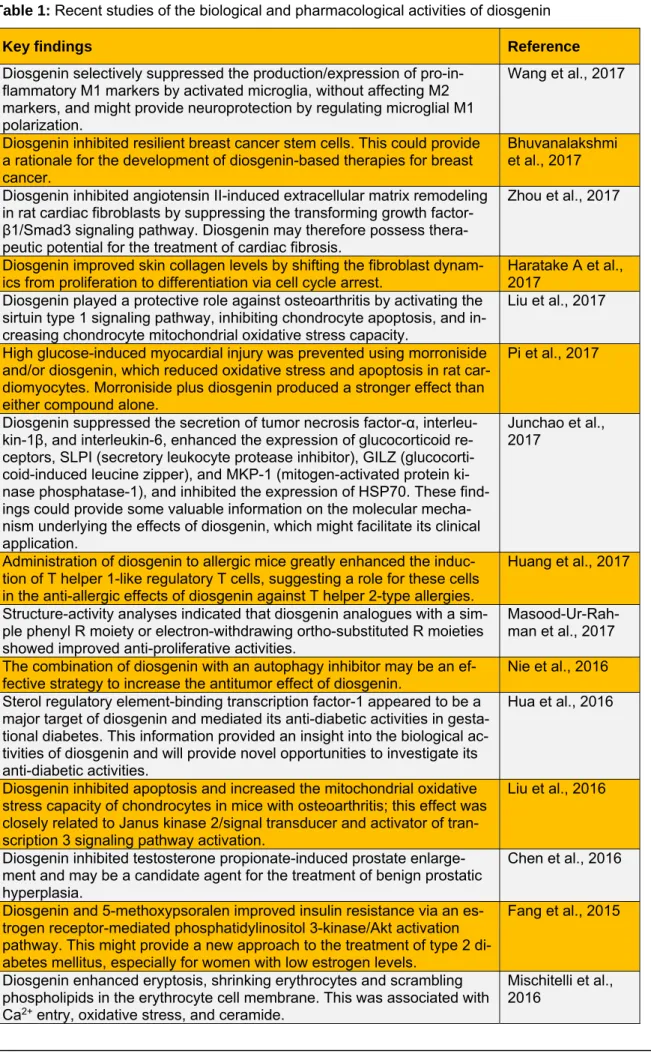An update on the biological and pharmacological activities of diosgenin
Volltext
Abbildung

ÄHNLICHE DOKUMENTE
Cultivation of the green phenotype (DzW) at the three light intensities of 10, 100 and 270 µ E · m Ð2 · sec Ð1 leads to changes of the diosgenin content in rhizomes, to an increase
Wounding, Drought, Elicitation, Catalase, Peroxidase The activity of O 2 -scavenging en- zymes in bean leaves in different positions and poplar leaves in different leaf storeys
Bacterial translation is affected in multiple ways by oxidative lesions (red asterisks) as observed in the pool of free amino acids, in elongation factors (EF-Tu, EF-G),
Various mechanisms may contribute to alcohol-asso- ciated carcinogenesis, including: (1) chronic inflammation resulting in increased oxidative stress, such as in alco-
Technological advances, such as those in neuroimaging and genetics, have enabled the examination of different aspects of (cerebral-) metabolism in migraine patients, while
Typically this is being attempted through the process of harvesting the patient’s own chondrocytes, expanding them, and after seeding them onto a biomaterial
The largest concentration deficits in total dissolved inorganic carbon were found to be associated with CaCO 3 precipitation and CO 2 degassing, because the magnitude of
No correlation was observed between the physiological measure (RMSSD) and the two psychological measures (Perceived Stress and log Negative Mood).. However, Perceived Stress